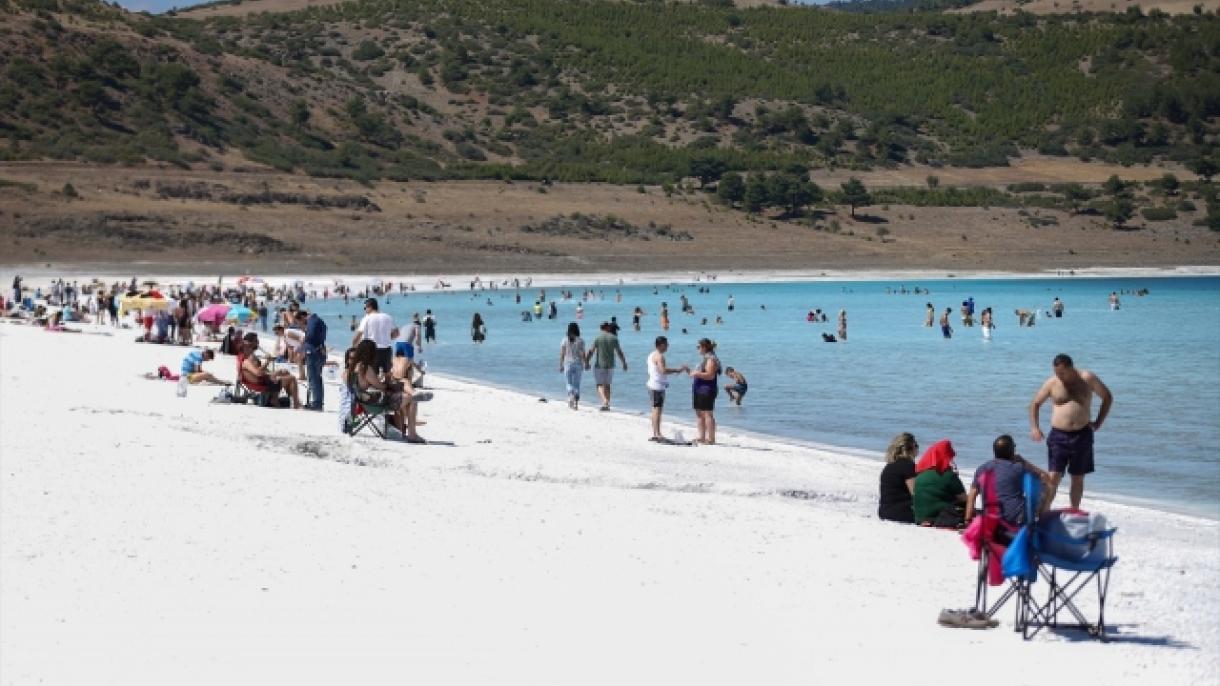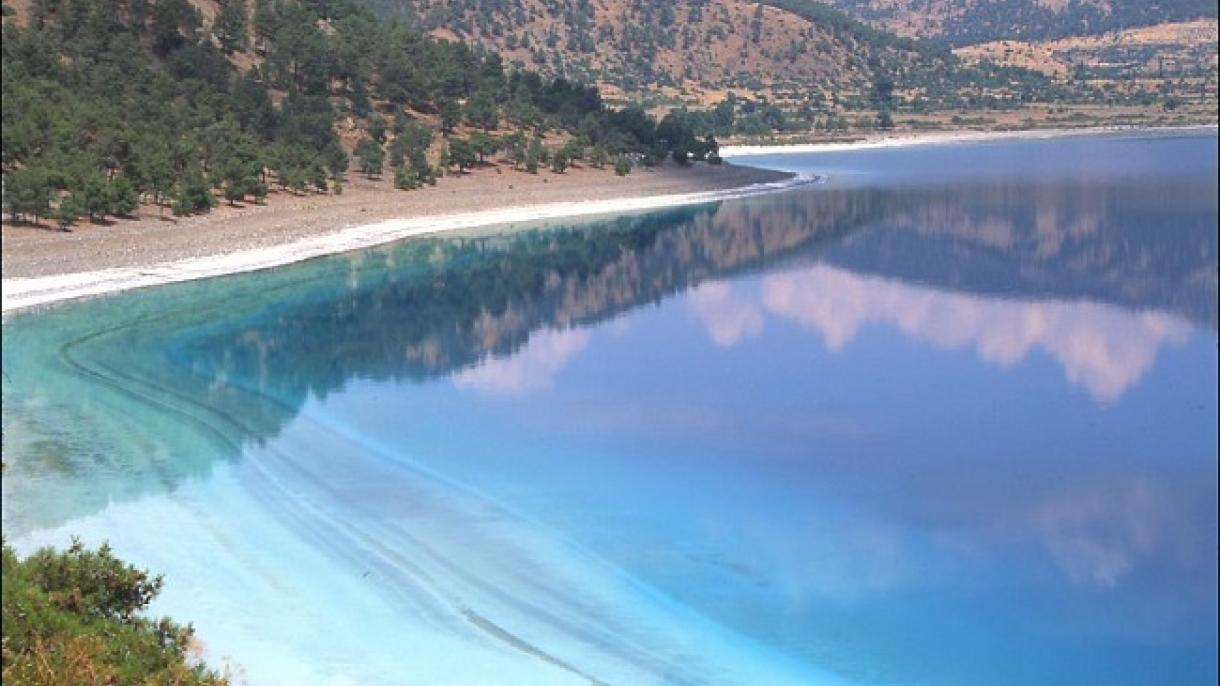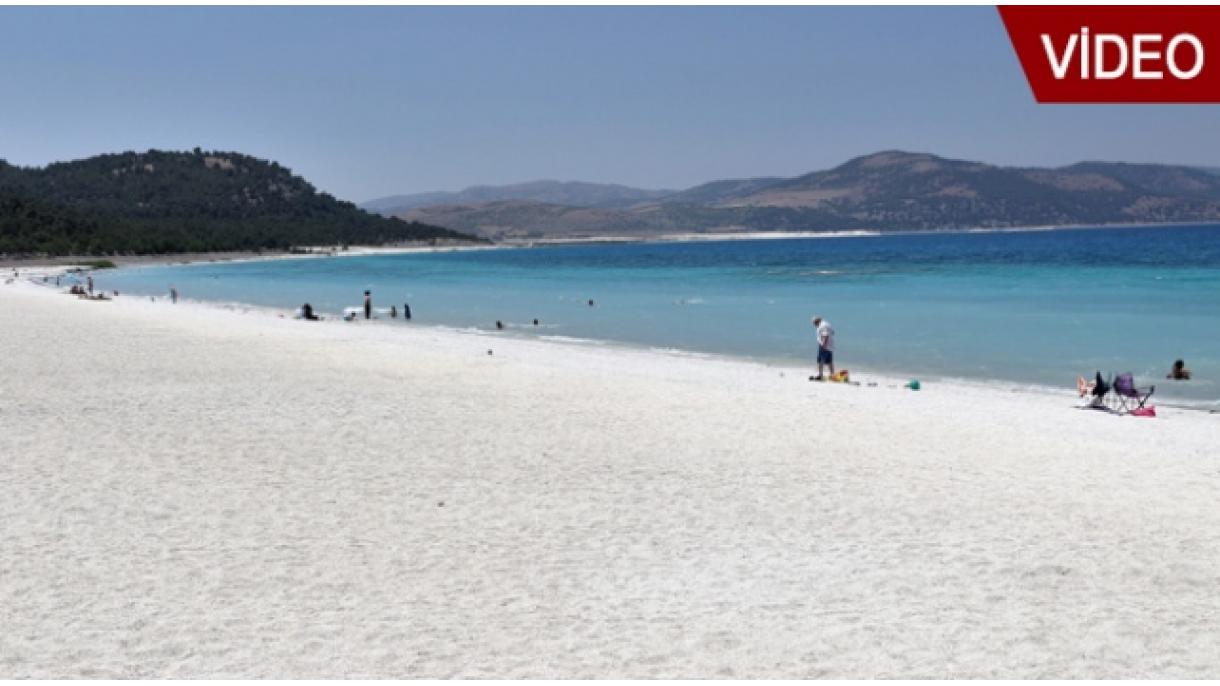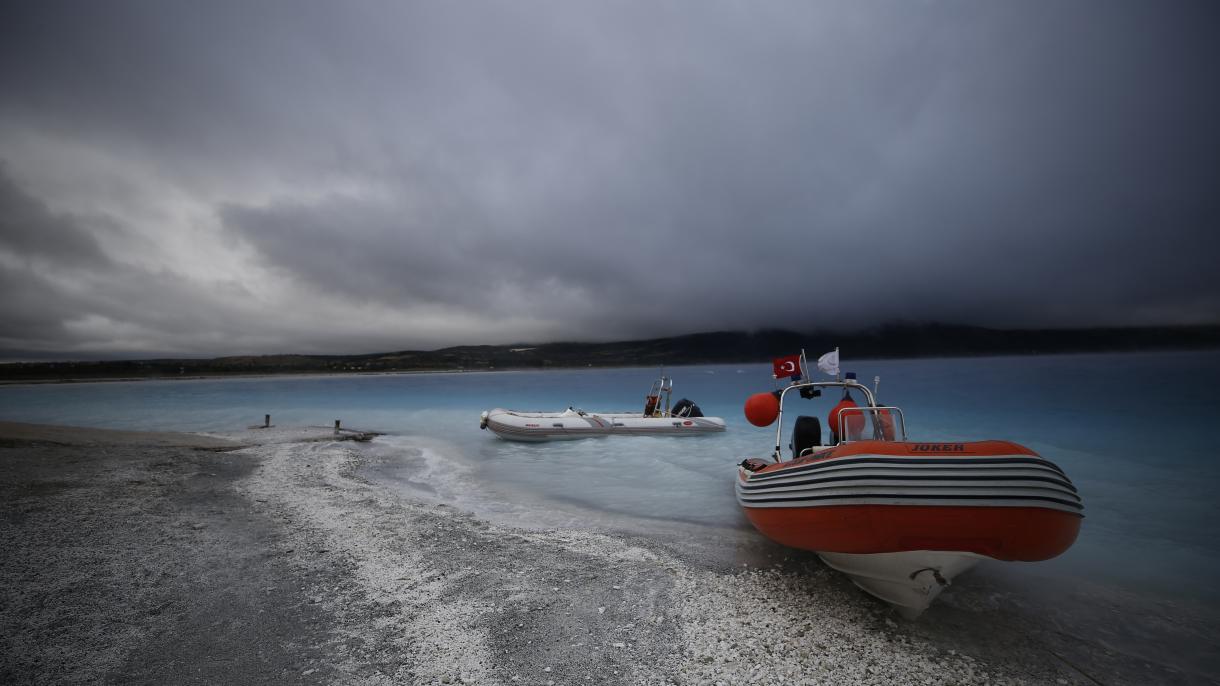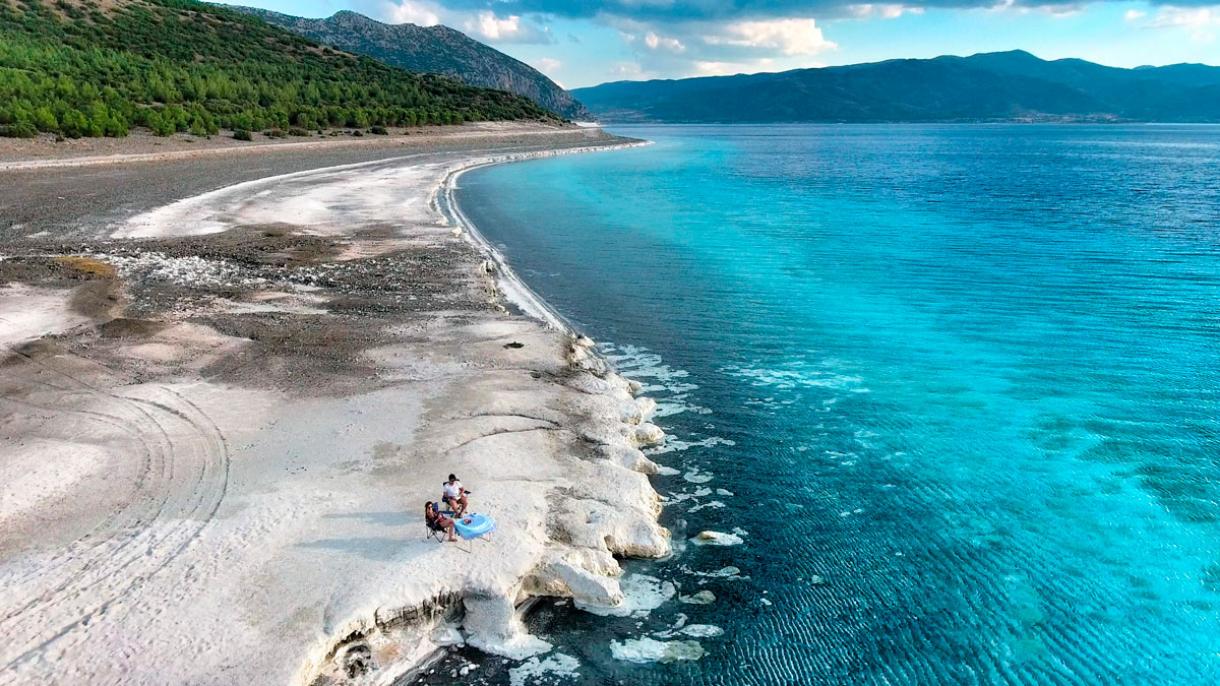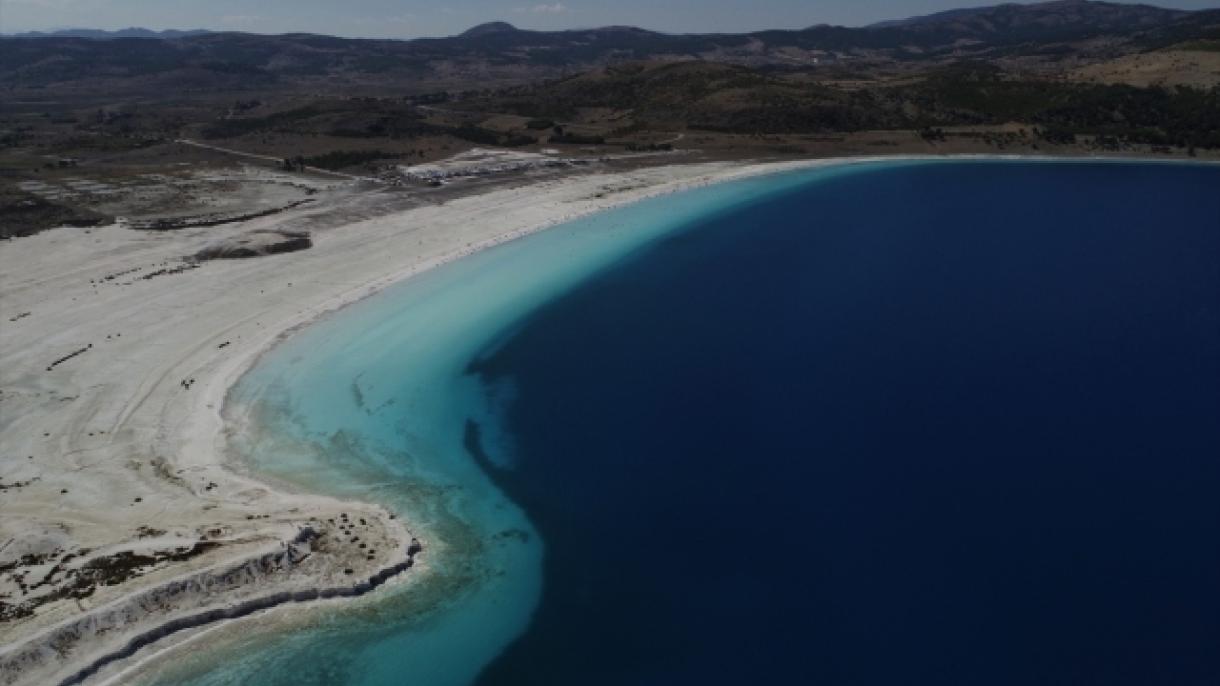トルコのサルダ湖と火星ジェゼロ・クレーターの謎!?
トルコ、行ってみたい国。
そして、何と火星の土壌との比較検証ができるとは。。。
早速、VOAニュースから、
サルダ湖に迫る!!!
火星とは関係ないのですが、湖と言えば、ウユニ塩湖に劣らないトゥズ湖もチェックしてくださいね。旅行できない今だから、写真だけでも。。。。。
- トルコの湖が火星の古代生命体の探索に貢献
- サルダ湖とは?
- トゥズ湖
- Turkish Lake Helps Scientists’ Search for Ancient Life on Mars
- Words in This Story
トルコの湖が火星の古代生命体の探索に貢献
Turkish Lake Helps Scientists’ Search for Ancient Life on Mars
March 12, 2021
アメリカの宇宙機関であるNASAは、先日、ロボット探査機Perseveranceパーセベランスを火星の表面に着陸させました。現在、科学者たちはトルコ南西部の湖で得られた情報を、遠い惑星での古代生命体の痕跡を探すのに役立てています。
NASAによると、サルダ湖の鉱物や岩石の堆積物は、地球上では火星のジェゼロ・クレーター周辺のものに最も近いといいます。探査機が着陸したジェゼロ・クレーターには、かつて水があふれていたと考えられています。
sediments;【sédəmənt】堆積物
サルダ湖から得られた情報は、科学者たちがクレーター周辺の堆積物に古代の微生物の痕跡を探す際に役立つかもしれません。
アメリカとトルコの科学者チームは、2019年に湖の周辺で調査を行いました。科学者たちは、湖の周辺の堆積物は、マイクロバイアライトと呼ばれる微生物の助けを借りて形成された大規模な埋蔵物に由来すると考えています。

探査機”Mars 2020 Perseverance”の着陸地点であるJezero Craterは、数十億年前の火星では湖だったと考えられています。湖の両側には、入口と出口が見えます。画像出典:NASA/JPL)
探査機Perseveranceパーセベランスのチームは、ジェゼロ・クレーターに微生物がいるかどうかを調べたいと考えています。
サルダ湖の堆積物と、ジェゼロ・クレーターの縁で発見された炭酸塩鉱物を比較します。炭酸塩鉱物は、生命にとって重要な要素である二酸化炭素と水から作られます。
トーマス・ツルブシェン氏は、NASAの副長官です。彼はロイター通信にこう語っています、「Perseveranceパーセベランスで何かを見つけたら、サルダ湖に戻って、両方のプロセスを調べることができます、PerseveranceとLake Saldaの間にある共通点、そして同様に重要な相違点をです。」
「ですから、あの湖があって本当に良かったと思っています。なぜなら、あの湖はずっと私たちと一緒にいてくれると思うからです。」と、彼は付け加えています。
サルダ湖とは?
アナトリア半島の南西部には、たくさんの湖がある地域、湖水地方があります。大小さまざまな湖のなかでも、サルダ湖は、トルコのモルディブと噂されるトルコのブランドの価値を高める観光地の代表格のひとつ。多くの人がその魅力に魅せられサルダ湖を訪れています。
サルダ湖は、Burdur(ブルドゥル)県のイェシロバ地区にある火山湖。小さな湖ですが、トルコで3番目の深さ184mを誇ります。湖周辺は、 特別環境保護地域として政府管理下におかれ、自然のままの状態が残されています。
トゥズ湖
https://www.travelbook.co.jp/topic/3963
トルコと言えばトゥズ湖も。
トルコの首都アンカラから南南東に150kmほど行ったところにある湖です。トルコ語で「Tuz=トゥズ(塩)、Gölü=ギュル(湖)」と呼ばれるこの湖は、その名の通り塩を多く含んだ塩湖です。

ボリビアにあるウユニ塩湖が有名ですが、こちらのトゥズ湖だって美しさでは負けていません。面積はウユニ塩湖の6分の1程度の大きさですが、南米まで行かなくてもトルコで絶景が見られるなんて!!
Turkish Lake Helps Scientists’ Search for Ancient Life on Mars
A general view of an exposed island of old microbialites at Salda Lake in Burdur province, Turkey, March 1, 2021. The official Twitter account of NASA Earth mentioned lake Salda in their tweet a day before NASA rover Perseverance touched down on Mars.
The American space agency NASA recently landed its robotic explorer Perseverance on the surface of Mars. Now, scientists are using information gathered at a lake in southwest Turkey to help them search for signs of ancient life on the distant planet.
NASA says the minerals and rock sediments at Lake Salda are the closest match on Earth to those around Jezero Crater on Mars. The spacecraft landed in Jezero Crater and it is believed to have once been flooded with water.
Information gathered from Lake Salda may help the scientists as they search for signs of ancient microorganisms in sediment around the crater.
A team of American and Turkish scientists carried out research in 2019 around the edges of the lake. Scientists believe that the sediments around the lake came from large deposits formed with the help of microorganisms known as microbialites.
The team supporting the Perseverance spacecraft wants to find out whether there are microbialites in Jezero Crater.
They will compare the sediments from Lake Salda with carbonate minerals discovered on the edges of Jezero Crater. Carbonate minerals are made from carbon dioxide and water, two important elements of life.
Thomas Zurbuchen is the associate administrator of NASA. He told Reuters, “When we find something at Perseverance we can go back to look at Lake Salda to really look at both processes, (looking at) similarities but equally importantly differences that are really between Perseverance and Lake Salda.”
“So we are really glad we have that lake, just because I think it will be with us for a long time,” he added.
Words in This Story
sediment –n. material that sinks to the bottom of water
deposit –n. an amount of a material that builds up over time on a surface such as the earth
